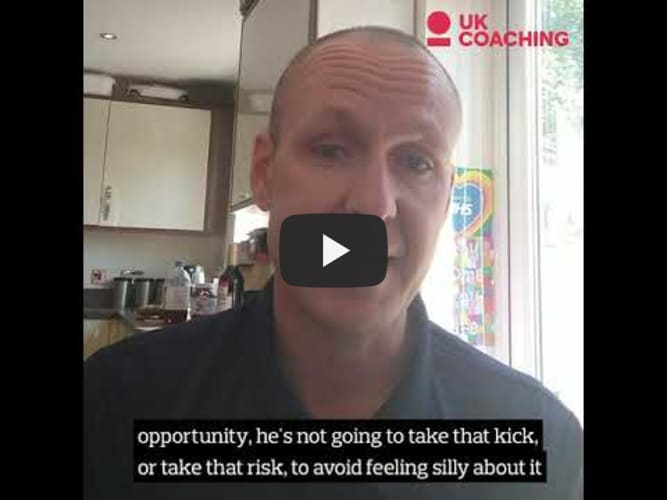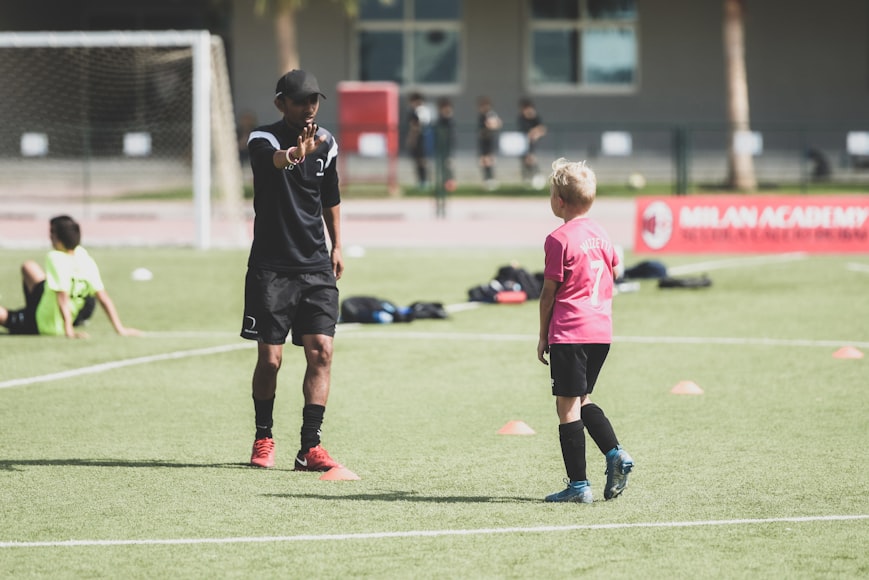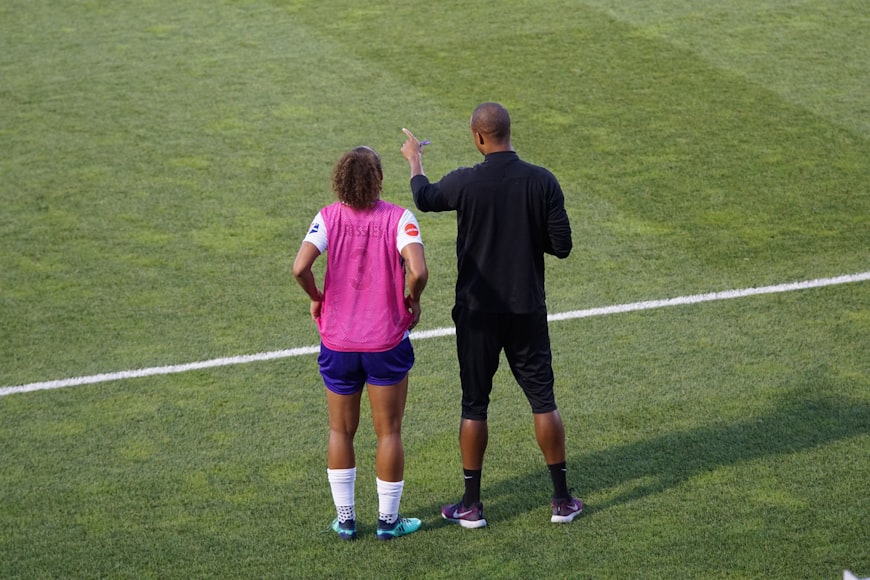5 Tips for beginner youth coaches to succeed
Before you take the first step in your coaching career, have a kickabout with our tips
Posted 2 years ago

So, you love football and are considering coaching young players. It could be an effective way to impart your extensive wisdom, encourage a family member to take up the sport, or simply to feel like Pep Guardiola marshalling your very own mini-Messi.
Keep in mind that becoming a good coach takes a lot of patience and effort - there’s no such thing as an overnight success. To improve, you must also exhibit an open-minded willingness to learn from both your successes and failures. Furthermore, keeping soccer kids engaged requires an intimate understanding of them as individuals, careful planning of coaching sessions, as well as the creation of a supportive environment where players, coaches, and parents work hand-in-hand to help them flourish.
While this may seem daunting to you before you commence your coaching journey, there’s no need to get frazzled. We’ve laid out some tips and tricks to help you stay on track with your coaching dream and take your team right to the very top.
1. Keep it positive
Negativity and undue pressure placed on kids only serves to make them more withdrawn and hesitant - far from what you want out of them as a coach. Kids do not respond well to negative criticism, regardless of how constructive it is.
Positive reinforcement, on the other hand, is the way to go! Encourage positive actions through praise, high-fives and most importantly, smiles. Resorting to positivity as your primary means of instruction makes kids more receptive to feedback, thereby allowing them to acquire the correct skills and behaviours (Cleere, 2018).
In the video above, Coach Jackman highlights the benefit of positively encouraging young players to look past their mistakes, which in turn boosts their confidence. He stresses that if players lack the confidence to take risks, they lose out on the opportunity to learn from them. This supports Smith, Zane, Smoll, and Coppel’s study (1983) on how coaching behaviour has a positive or negative influence on players’ attitudes towards the sport.
2. Understand that every player is unique
It is common practice to assume your kids are all the same since they all play for the same team. However, a key step to becoming a better coach is understanding that each of them is a unique individual. They possess varying levels of physical and mental maturity, so identifying areas of improvement will likewise, vary.
Focus on 1:1 instruction that develops specific skills, while still maintaining a cohesive team foundation. This will allow you to get a better understanding of your players’ needs, limitations, and strengths (Smoll, 2017). Adopting a high-touch strategy will not only help you get the most out of your players, but it will also help them get the most fun out of the game.
Treiner Coach James Muir believes in tactical development through 1 on 1, high-intensity training sessions that allow for drill repetition. This approach has been well received amongst his players, with his shooting and 1st touch drills as particular standouts.
3. Cultivate respect and good sportsmanship
As Guardiola once stated, “We always try to win until the very end. If we don’t, we congratulate the opponent. That’s what sport is about.”
Good sportsmanship goes a long way towards developing kids’ values, both on and off the pitch. Teaching your players to follow the rules reduces unsafe behaviour and equips them with valuable ethics, leadership and social skills to take on the world (Vallerand, Deshaies, Cuerrier, BriÈre & Pelletier, 1996; Harrison, 2016). Apart from teaching your players the rules of the game, try to create a respectful culture in training sessions as well. Respect is the foundation upon which effective player-coach relationships are built. Demonstrate this firsthand, by arriving early and prepared for practice, listening to players’ voiced concerns, and being fair and consistent with your instructions. A way to achieve the above is to draft and instate a Code of Conduct (see below for example) that must always be followed.

4. Keep the ball rolling
Remember that the kids are here to play footy, not to try and memorise strategies and tactics. In other words, try to keep the ball rolling for at least 70% of the practice session. “If we want kids to improve, we must let them practice more and… spend less time standing around listening to coaches”, states Lewis Dickman, former FA youth coach educator.
This does not mean you should adopt a laissez-faire attitude during training. The ‘70% rule’ serves as a guide for coaches to improve key message delivery to suit your players. Use easy-to-understand match drills and exercises to keep intervention numbers low and players engaged and active.

5. Make sessions fun!
At the end of the day, kids turn up to play sports for one reason: to have fun. It is your responsibility as the coach to make training sessions engaging for all players. As Smoll (2017) insists, a fun approach is the best way for kids to understand concepts and motivates them to continue practising them. The incorporation of friendly competition could also enliven an otherwise mundane training session.
Treiner Coach Kogulan Sabaratnam’s philosophy of varied drills that can be applied in game-based play, is an endorsed example of developing skills whilst maintaining engagement.
In a similar vein, allow kids to choose those positions that they enjoy or feel comfortable playing in. Nobody in the early phase of their playing career knows what position they’re meant to play in. Therefore, avoid pigeonholing players in specific positions, and give them a challenge every now and then.
When beginning your coaching career, the level of hard work and determination required might understandably seem intimidating. But as the saying goes, ‘Focus on the journey, not the destination’ - it’s way more fun, trust us.
If you find coaching intriguing and would like to progress your career in this space, there’s no better time to pursue your coaching accreditation. You will then gain even further insight into being a professional coach, opening up more opportunities to exhibit your skills.

P.S. To download and create your own customisable Treiner coach resume template for free, click here.
Additionally, if you think you’d be a perfect fit in the Treiner team as a partner coach, contact us today.
Writen by Shane D'Souza
Social Media
References
-
Cleere M (2018). “The Biggest Benefits of Positive Reinforcement”. https://drmichellecleere.com/blog/biggest-benefits-positive-reinforcement/
-
Harrison T (2016). "Emphasizing Sportsmanship in Youth Sport." Sportsmanship: Multidisciplinary Perspectives, 87-99.
-
Vallerand R, Deshaies P, Cuerrier JP, BriÈre N, & Pelletier L (1996). Toward a multidimensional definition of sportsmanship, Journal of Applied Sport Psychology
-
Smith R, Zane N, Smoll F, Coppel D (1983). Behavioral assessment in youth sports: coaching behaviors and children's attitudes. Med Sci Sports Exerc
-
Smoll F (2017). “High Quality Teaching Boosts Learning in Young Athletes”. https://www.psychologytoday.com/au/blog/coaching-and-parenting-young-athletes/201705/high-quality-teaching-boosts-learning-in-young


